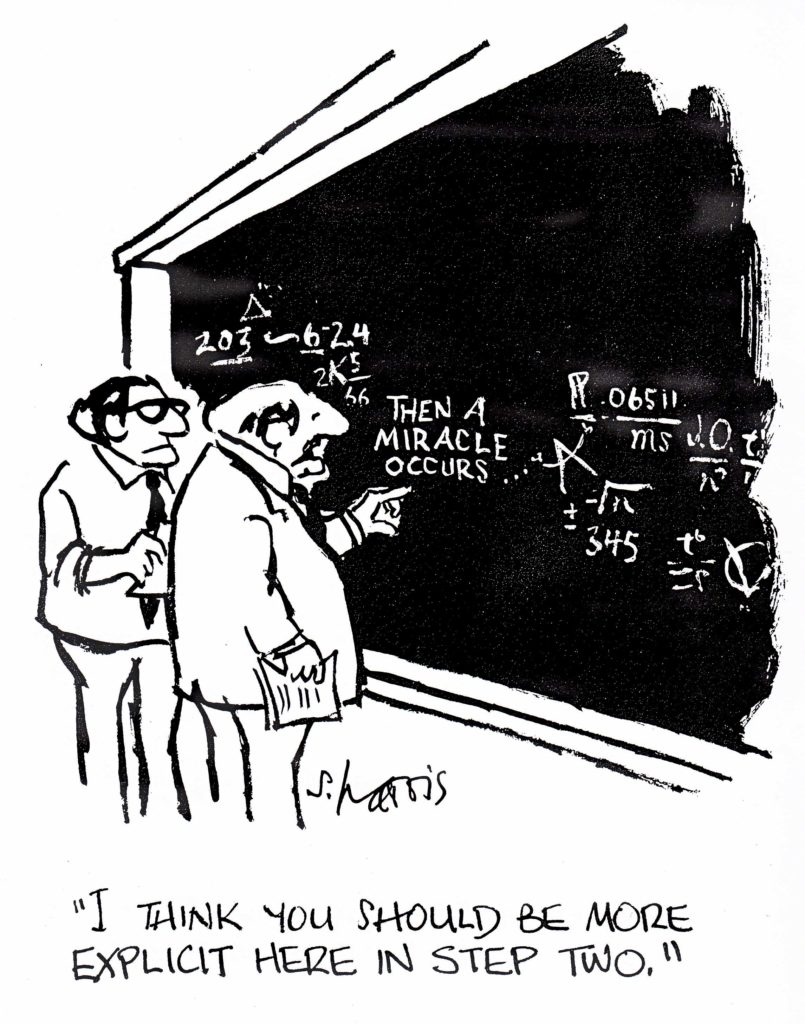
Across the world this week, real estate managers, REIT staff, and ESG practitioners are busy examining their preliminary GRESB scores. With final rankings released in October, GRESB participants are assessing these initial results – trying to make sense of thousands of data points that have been boiled down into a de facto “ESG Report Card.” For commercial real estate, it’s become an annual tradition: gather data, spend months assembling information, crunch the numbers, get more information, assess, and then finally, act.
Report
React
Rinse
Repeat
Reporting versus thinking
For most of our clients, GRESB and other reporting frameworks take up 5-7 months of the year through participation, assessing performance, strategizing how to do better next year. It occupies much of their ESG mind space and is a primary driver of ESG activities. To be clear, this is generally a good thing. GRESB – more than any other framework – has catalyzed the use and application of ESG best practices in commercial real estate. With participants covering over $5.7 trillion in assets under management and representing over 117,000 individual properties, GRESB acts as the barometer for ESG in real estate.
But what does GRESB truly measure? Broadly speaking, GRESB filters a host of wildly varied ESG performance metrics – from individual monthly utility bills and Board diversity to climate risk policies and much, much more – into a few ESG ‘scores’ at the fund level. In a ‘back of the envelope’ calculation, RE Tech estimated that to participate in GRESB, a fund of 100 properties has to assemble, analyze, quantify, sort, and authenticate as many as 50,000 data points. A significant part of what GRESB and other ESG frameworks assess is simply one’s ability to report and organizational willingness to commit resources to the reporting process.
These frameworks measure what policies and activities are in place, and in some cases, broad environmental performance metrics like year over year carbon emissions. These types of reporting scores can provide insight into what you are doing, but they cannot determine if what you are doing is effective…if your strategy is on point. They cannot measure the quality of your thinking.
The ESG thesis
Boiled down, an investment strategy is an argument. We say to investors “Give me x dollars, we will apply your money in this specific way, and if we are successful, you will receive y dollars back…” Call it the investment strategy, the business case, the path to ‘alpha’. We spend inordinate amounts of time crafting pitchbooks and prospectuses, outlining how this fund or strategy will better meet investment objectives, manage risks, or capitalize on new opportunities.
But not enough thought is put into what we can call the ‘ESG thesis’, the specific ways in which certain ESG factors drive investment performance. The ESG thesis is the missing link between reporting and returns. It focuses and formalizes the crux of your argument, where ESG is the keystone of your investment thinking. We must better articulate the mechanisms that determine how ESG drives returns within each strategy and connect the dots from cause to effect.
And as an industry, we could do better connecting the dots on ESG…

To an extent, this is natural. After years and years of hard work, we are just now getting into a mature cycle of collecting and reporting on sustainability and ESG data, and we have established foundational business cases – general ideas of how ESG adds value and reduces risks.
However, without that causality clearly defined from an ESG perspective – without the ESG thesis- we face the danger of flinging hundreds of ESG data points, indicators, results, and activities into the market as political cover, a smokescreen, a competitive flourish, or even greenwashing. We fall into the trap of presenting ourselves as very active investment managers, but perhaps not as focused as we might want to be:
Manager: “Look how much we are doing! See our scores – our progress – our targets! Behold…our ESG report!”
Investor: “Uh, ok. But is your strategy panning out? Are we making money? Is this a smart play?”
Ok, perhaps that’s harsh. At RE Tech, we love working with our clients on ESG reports – they are a crucial element of stakeholder engagement and transparency. But the industry is furthering its expectations and simply telling the story of what ESG activities are occurring is no longer sufficient. It’s time to get better at describing why those activities are meaningful, and how the strategies willdrive returns. As an industry we need to further clarify our thinking and better convey each ESG thesis.
Meaningful vs. Material
Most firms attempt to resolve this issue by conducting a materiality assessment, and we at RE Tech frequently recommend this to our clients. It’s a powerful tool, when used appropriately, that can help ensure alignment between ESG factors and stakeholder needs.
Yet too often materiality assessments become an academic exercise – listing and ranking ESG factors without changing or adapting the investment strategy accordingly.
If we’re being honest, materiality assessments – when applied this way – are a backwards view and become a way of retroactively applying ESG factors into a fully baked investment strategy. You survey stakeholders, take input on various ESG factors, maybe plot them on a matrix, and “Abracadabra!” here is what is material.
The complication is that there is a difference between what is material and what is meaningful to an investment strategy. Thousands of factors can be material – weather, politics, the price of bread – they can provide an ESG foundation of sorts. Who isn’t going to say adherence to modern slavery laws is important and necessary as part of your investment management practices? Or compliance with energy disclosure regulations, or fair and equitable contracting? One could argue that everything is material at some level.
The result is a lack of focus and a tendency to treat all ESG factors as equal. But the reality is that the ESG factors that you should pay the most attention to are usually a subset of the ESG universe, vary from fund to fund, and are dependent on the specific investment strategy. For example, the ESG thesis for an international, opportunistic data center fund is going to differ significantly from that of a North American core multi-family fund, because the investment strategies of the two are different.
The ESG thesis can clarify this, sharpen our view on which ESG factors provide ‘meaning’ in each situation. RE Tech seeks to help our clients realize this clarity, where ESG factors inform and influence an investment strategy, which flow into key-performance indicators, critical targets, and goals.
Then you report on progress – but with a narrowed focus on the most relevant metrics that show your ESG thesis is panning out.
Initial Moves and Next Steps
Increasingly, we see savvy managers moving in this direction, and we are helping our clients craft finely tuned ESG theses with focused, meaningful ESG factors. We can’t disclose exactly what strategies our clients are exploring – but it’s fascinating to see new funds being created that are incorporating ESG factors from the outset and that are deeply rooted in the investment approach. These are raising such questions as:
- What markets do you invest in from an ESG or climate risk lens, for a diversified, core fund?
- How does tenant engagement support an industrial strategy?
- What resident programming and educational initiatives can improve retention rates?
- How do you underwrite an asset for exit given future – but uncertain – carbon regulations?
- And more…
As the market matures and this more nuanced approach to ESG takes hold, we expect the need will grow for new tools, analytical approaches, financial models, and engagement mechanisms. Our team at RE Tech has already begun building ESG scorecards and evaluation tools to provide insights and drive decision-making in this vein – helping our clients filter out the noise and isolate “the meaningful.” We’re excited to continue to extend these tools all the way to the ultimate arbiter of success – returns.
We look forward to working with our clients and market leaders to move towards a more targeted and deliberate application of ESG into real estate investing. The value is there, and the diversity and array of opportunities to blend ESG factors with investment strategies are evolving.
As such, our hope is that during GRESB and other reporting results seasons, discussions will center less on overall rankings and relative standings, and more on the ESG thesis and coinciding factors including KPIs that matter to the strategy and drive returns:
Manager: “Our strategy for our value-add international fund depends on x and y…and we nailed those particular indicators
on this year’s GRESB results…”
Investor: “Good, that is an important signpost that our execution is on track…looking forward to seeing the financials soon…”
As an industry, we’ve come a long way, from documenting the general ‘business case’ of sustainability to more advanced discussions of competitiveness, risk mitigation, data collection, and reporting.
Now it’s time to connect those final dots and sharpen the ESG thesis. Now we can demonstrate what many of us know intuitively – when in alignment with your strategy, reporting frameworks and ‘scores’ can be a powerful tool that links investment execution to financial returns.
Authors
